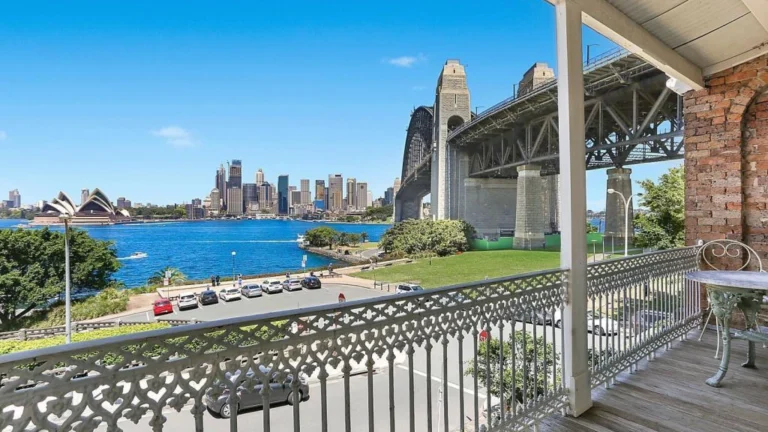Current Trends in the Sydney Real Estate Market
Property movements across Sydney are signalling a shift, driven by evolving demand, tightened rental markets, and affordability pressures in key suburbs. Buyers and investors alike are responding to these signals, adapting their strategies in real time. At House Hunters, we’ve analysed the current market conditions to help you understand where Sydney real estate is heading and what it means for your next move.
Key Takeaways
- Interest Rate Cuts: The Reserve Bank of Australia’s recent rate reductions have rejuvenated buyer confidence, leading to increased market activity.
- Population Growth: Sydney’s population is projected to grow significantly, intensifying demand for housing across various suburbs.
- Affordability Challenges: Despite rate cuts, rising property prices are outpacing wage growth, making affordability a pressing concern for many buyers.
- Rental Market Tightness: Low vacancy rates have led to increased rental prices, impacting both tenants and investors.
- Suburban Shift: More buyers are turning to outer suburbs and regional locations in search of housing that offers greater value and affordability.
Sydney’s real estate market has shown resilience in the face of economic fluctuations. Property prices in Sydney have experienced modest growth, influenced by key factors that affect the real estate price, including limited housing supply and sustained demand.
The Reserve Bank of Australia’s decision to cut interest rates has played a pivotal role in revitalising the market. Lower borrowing costs have made property purchases more accessible, encouraging both first-time buyers and investors to re-enter the market.
Key Current Trends in the Sydney Real Estate Market
Sydney’s real estate market in 2025 is navigating a complex landscape shaped by evolving buyer preferences, policy interventions, and broader economic factors. As the city continues to grow, several key trends are emerging that are influencing both the residential and commercial property sectors.
1. Rising Property Prices Amidst Slowing Sales
In April 2025, Australian home prices reached a new record high, increasing by 0.3% from March to an average of A$825,349. This growth, sparked by factors such as strong immigration and limited housing supply, ended a year-long market decline earlier than expected. However, signs indicate that market momentum may be slowing. Sales volume and new listings have dropped to their lowest levels since 2019, and auction clearance rates are also at a low point, affected by the recent Australian federal election. Household confidence has also declined, potentially delaying buying and selling decisions. Despite these concerns, modest price increases are anticipated later in 2025, especially with expected further rate cuts.
2. Intensifying Rental Affordability Crisis
Rental affordability in Sydney has become a critical issue, particularly in western suburbs such as Parramatta and Blacktown. Some areas have seen rent hikes of over 20%, with costs exceeding 40% of average local income. This crisis has led to increased pressure on renters, with fewer than 1% of listings remaining affordable for minimum wage workers. Despite housing being a major driver of inflation, experts criticise both major political parties for neglecting renters in their election policies and focusing instead on promoting homeownership.
3. Government Initiatives to Address Housing Supply
The Australian government has implemented a series of targeted policies to boost housing supply and support first-time buyers. The Housing Australia Future Fund (HAFF), launched in September 2023, is set to deliver 30,000 new social and affordable homes over five years. While early rollout faced delays, progress was underway, by October 2024, approvals were in place for 13,700 homes already in development.
Additionally, the National Housing Accord commits to constructing 1.2 million new homes by 2029, focusing on increasing supply in well-located areas to alleviate affordability pressures. The Help to Buy Scheme, legislated in November 2024, assists up to 40,000 first-time homebuyers by contributing up to 40% of the purchase price for new homes, reducing the financial burden on buyers.
4. Shift Towards Sustainable and Smart Living
Sustainability is increasingly influencing buyer preferences in Sydney’s property market. Homes equipped with solar panels, energy-efficient systems in home, and smart technology are in strong demand. Properties with sustainable features tend to sell more quickly and frequently command higher market prices. For instance, the ‘Green Haven’ apartment complex in Surry Hills boasts a range of eco-friendly features, including a rooftop garden that helps regulate the building’s temperature. Similarly, the ‘Solaris’ project in Parramatta features a massive solar panel array that generates enough energy to power the entire complex, reducing energy costs for residents.
5. Urban Renewal and High-Density Living
Sydney is undergoing significant urban renewal, with projects like Barangaroo, The Bays Precinct, and Green Square transforming former industrial areas into vibrant mixed-use communities. These developments are attracting residents and investors seeking modern amenities and proximity to employment hubs. Additionally, about 60% of Sydney apartments built after 2020 are considered high-density, reflecting a trend towards maximising land use in urban areas. This transition is reinforced by planning policies that promote higher-density housing, especially within inner-city areas and middle-ring suburbs.
6. Demand for Properties with Outdoor Spaces
There is a growing demand for properties with outdoor spaces, driven by lifestyle preferences and the desire for more sustainable living. Suburbs like Springwood, Minto, and Winmalee are experiencing price growth due to their affordability and the availability of outdoor spaces. These areas offer a blend of suburban charm and the outdoor lifestyle that many are seeking. The COVID-19 pandemic made many Australians realise the importance of green spaces for exercise, connection, and solace, leading to a greater emphasis on creating and enhancing outdoor living spaces.
7. Technological Transformation of Property Transactions
Digital innovation is transforming the way Australians engage with property transactions. Tools like virtual tours, 3D inspections, and AI-driven platforms are elevating the buying and selling experience. Real estate professionals are increasingly using channels such as Instagram, Facebook, and LinkedIn platform to deliver targeted marketing and generate quality leads. Automated property valuations, chatbots for inquiries, and predictive analytics are streamlining the buying and selling process, making it more efficient and accessible.
Conclusion
Sydney’s real estate market in 2025 is characterised by a mix of opportunities and challenges. While interest rate cuts have injected vitality into the market, affordability remains a pressing concern. The shifting dynamics underscore the importance of informed decision-making. That’s why we offer tailored insights and resources for buyers and sellers, to ensure you’re equipped at every stage of the property journey. At House Hunters, we’re committed to guiding you through these complexities, ensuring you make well-informed property decisions. Whether you’re buying, selling, or investing, our expertise is your asset. Contact us today to navigate Sydney’s evolving real estate landscape with confidence.
FAQs:
What factors are driving Sydney’s property price increases in 2025?
A combination of interest rate cuts, limited housing supply, and strong population growth is contributing to the rise in property prices.
How has the rental market in Sydney changed recently?
The rental market is experiencing low vacancy rates, leading to increased rental prices and heightened competition among tenants.
Are outer suburbs and regional areas becoming more popular among buyers?
Yes, due to affordability issues in central Sydney, many buyers are exploring properties in outer suburbs and regional areas.
What impact do interest rate cuts have on the real estate market?
Lower interest rates reduce borrowing costs, making property purchases more accessible and stimulating market activity.
How can House Hunters assist me in navigating the current market?
House Hunters offers expert guidance, market insights, and personalised services to help you make informed real estate decisions.








